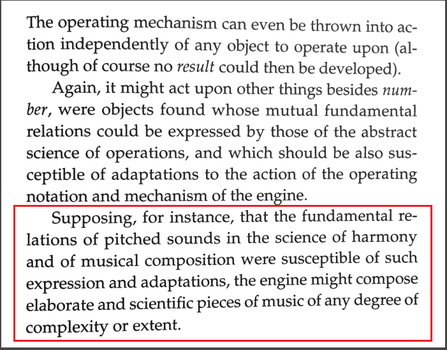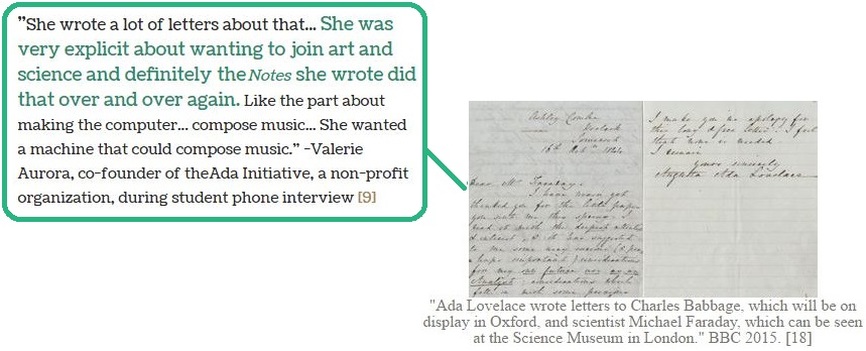Imagination: A Tool of Exchange
|
Double click to zoom Poetic Science Sketch by Sydney Padua 2015. [2]
|
Babbage focused on the calculating capabilities of the Analytical Engine while Lovelace explored its artistic potential. She understood that it could perform more than just arithmetic.
“The more fundamental leap that she made is that she understood that the Analytical Engine could do more than calculate numbers. She understood that if you could break something like music or art down into rules, that you could then use symbolic logic to program the analytical engine to create graphics or music. That was something no one else at the time understood.” -Suw Charman-Anderson, founder of Ada Lovelace Day [16] Her leap effectively exchanged and combined her newly conceived programming with the creativity of the arts. |
|
Section of "Note A" by Ada Lovelace [17] |
Walter Isaacson discusses Lovelace's ability to connect the arts and the sciences. World Science Festival 2015. Time 36 secs.
|
In her Notes, Lovelace detailed how even graphics and music could be produced, describing how the technical intricacies of the Analytical Engine were essential to the creation of art.
Lovelace's hybrid art and science conception proved time-enduring and limitless.
Indispensable Human Creativity
"The Lovelace approach is that machines will never truly think and that humans will always provide the creativity and intentionality. The goal of this approach is a partnership between humans and machines, a symbiosis where each side does what it does best. Machines augment rather than replicate and replace human intelligence. We humanists should root for the triumph of this human-machine partnership strategy, because it preserves the importance of the connection between the humanities and the sciences." -Walter Isaacson, author of the Innovators [21] |
In the 20th century, Alan Turing, the Father of Modern Computing, challenged Lovelace's approach, proposing that a computer could someday have a mind of its own. However, as of today, like Lovelace concluded, technology still relies on the exchange of instructions from a human.




